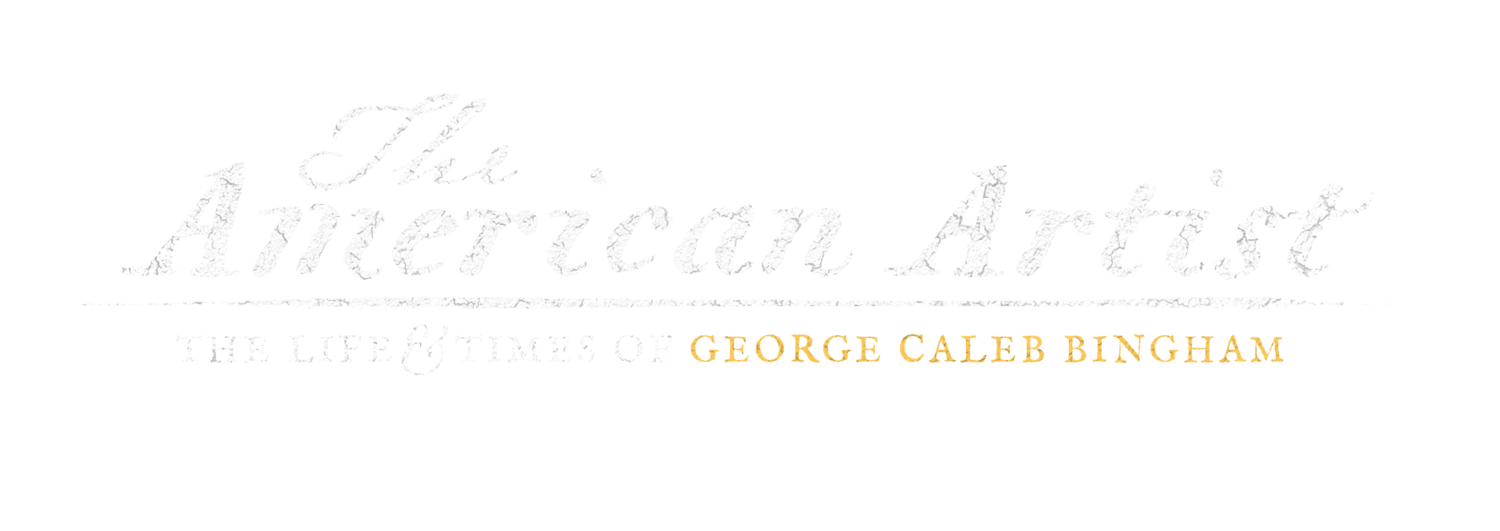Throughout our documentary, The American Artist: The Life & Times of George Caleb Bingham, we pause to examine Bingham’s legacy.
Perhaps Bingham’s greatest direct influence was on another Missouri artist, Thomas Hart Benton.
If you’re not familiar with Benton, he was a painter and muralist at the forefront of The Regionalist art movement in the early-to-mid-20th century. Hailing from Neosho, Missouri, Benton’s style, process and subject matter were all self-admittedly influenced by Bingham’s work.
There are numerous examples of the ties binding the two men’s work, such as Benton often recreating in his own work scenes from the Missouri of Bingham’s lifetime.
But perhaps the clearest example of Bingham’s influence on Benton’s work can be recognized in a comparison between Benton’s mural “The Sources of County Music” (1975) which hangs in the Country Music Hall of Fame in Nashville, Tennessee, and Bingham’s, “The County Election” (1852).
Comparing the two paintings, created more than a century apart, is to witness Bingham’s influence reaching across the years as Benton’s vision reaches back to meet it halfway.
The folks over at THIRTEEN have created a quick, fantastic video that looks at the ties between the two paintings. You can view it here.
First you notice their similarities in style and color palette. On the surface both paintings depict scenes of multiple dramas acted out by a cross section of Americans. At first glance the paintings appear chaotic, but spend time with the each artwork and eventually it reveals its unifying theme. For Bingham’s painting it’s American democracy in action; for Benton, it’s the roots of this most American of musical art forms.
To be clear, Bingham’s influence on Benton and his work extends beyond the canvas. They worked in similar fashions too.
In an excellent online article for Antiques & Fine Art Magazine, Randall R. Griffey, associate curator at the Metropolitan Museum of Art, writes that, like Bingham, Benton created preliminary drawings for his major works.
Below you will find an example of Bingham's process of moving from sketch to painting. First we see an detailed drawing of an individual:
Skillet beater (2) [from "Jolly Flatboatmen in Port"], ca. 1857. Bingham Trust, Lent by the People of Missouri, Gift of the Kansas City Star Company (on loan to Saint Louis Art Museum)
Then we can see how that character is transformed as Bingham brings that character to life among all the others in the painting The Jolly Flatboatmen:
The Jolly Flatboatmen, 1846, Courtesy of The Manoogian Collection and The Amon Carter Museum of Art.
Griffey writes that Benton would adopt this technique and others and even went so far as creating miniature clay models of compositions “to establish clear spatial relationships between forms.”
He also points out that both artists sought to spread their work and populist ideas to larger audiences and markets via printmaking.
If you would like a deeper look at Bingham's process, complete with sketches and final artworks, you should check out the companion site to show Navigating The West: George Caleb Bingham and The River on the Amon Carter Museum of Art web site.
More than style or process, perhaps Bingham’s greatest influence on Benton was in artistic purpose. Benton agreed and carried out Bingham’s notion of creating art that was engaged, both socially and politically, with the times they lived in.
Despite living in different times, these two men who strived to define American art were met with similar receptions from the critical community.
In that same article Griffey writes, that “Benton considered Bingham a kindred artistic spirit from the past, one whose art had likewise occasionally rubbed Eastern critics the wrong way.”
In their respective times both men may have been snubbed by the Eastern artistic establishment, but from the modern vantage point we can clearly see that they succeeded in defining a truly American art in their own time and beyond.
Griffey also quotes Benton talking about Bingham and his influence on 20th Century art, who said, “Bingham lived in a day when it was the picture rather than the way it was made which occupied the amateur’s attention. …American painting is again coming back to this simplicity…[It] is rising again as a popular art, as an art that has meaning for Americans.”
If you’re in the Kansas City area any time soon, you owe it to yourself to check out the Benton exhibit, American Epics: Thomas Hart Benton and Hollywood, currently showing at The Nelson Atkins Museum through Jan. 3, 2016. It’s a thorough and thoroughly entertaining look at the relationship among Benton’s work, movie making and visual storytelling.
It’s also a great way to get a first-hand look at Bingham’s influence on Benton’s impressive work.
To learn more about Bingham and for updates about the documentary, The American Artist: The Life & Times of George Caleb Bingham, due in 2016, please join our mail list.

